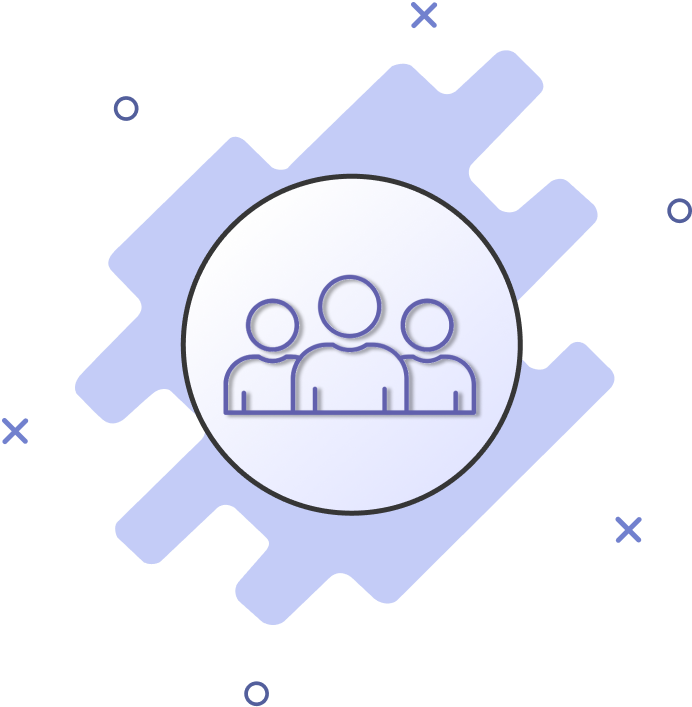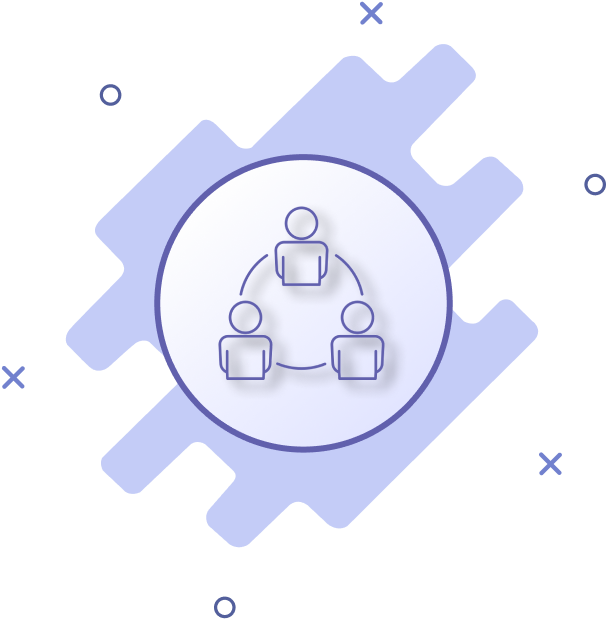sales transformation for a high-tech company
IT-integrator and high-tech solutions and services provider for В2В clients.
The company had become accustomed to rapid growth driven by a quickly expanding market. In the past two years, insourcing teams, consultants, telecoms, and niche IT players intensified the level of competition in the market. The sales and sales support functions needed to rethink their approach to working with clients to maintain the company's rapid growth in the face of increased market pressures.
Working with the client we defined the following task: using best-in-class customer experience tools, transform sales and sales support to deliver stable double-digit margin growth.
company
context
strategic request

A strong transformation leader who is empowered and has authority over the functions involved.
Cross-functional team of sales, analysts, marketing, production, and finance (15 people for 50-70% of the time).
An additional team of subject matter experts to generate ideas and provide feedback on proposed solutions.
Cross-functional team of sales, analysts, marketing, production, and finance (15 people for 50-70% of the time).
An additional team of subject matter experts to generate ideas and provide feedback on proposed solutions.
Three-week sprints: regular pre-scheduled sprint planning meetings, stand-ups, mini-team workshops, demos, and retrospectives
A virtual team room with a collaboration board and constantly available video conferencing domain, group chats on topics for prompt issue resolution
A constructive and fast mechanism for problem escalation
A virtual team room with a collaboration board and constantly available video conferencing domain, group chats on topics for prompt issue resolution
A constructive and fast mechanism for problem escalation
Team
work format

–
–
–
–
–
–
–
–
–
–
–
–
–
–
–
–
–
–
–
–
–
–
–
–
–
–
–
–
–
–
–
–
–
–
–
–
–
–
–
–
–
–
–
–
–
–
–
–
–
–
– A strong transformation leader who is
– Cross-functional team of sales, analysts,
empowered and has authority over the functions involved.
marketing, production, and finance (15 people for 50-70% of the time).
– An additional team of subject matter
experts to generate ideas and provide feedback on proposed solutions.
what we delivered:

1. diagnosis of the current sales model:
The central piece of the diagnostic was the study of the deep customer needs and their experiences interacting with IT solution suppliers during the purchasing stage across the market space. We conducted 15 in-depth interviews of B2B clients, which revealed their pain points and moments of truth regarding the fulfillment of their needs. We studied both the interactions with our company and interactions with competitors. This allowed us to define the current customer journey and compare it with the existing internal sales process to identify gaps. These gaps, which were the source of the customer pain points, were reconfirmed using the results of the detailed analytics of the sales funnel.
Through zero-based design sessions with a cross-functional team, we developed a target sales model to achieve the company’s business growth ambitions. The model consisted of the target customer journey, associated internal process, supporting tools, and success monitoring metrics. We did not limit ourselves to current systems, processes, and best practices during these sessions - we developed a model “as Elon Musk would do it." We generated 300+ ideas, which we then structured into 40+ initiatives. We prioritized those initiatives and selected 5 of them for the first pilot program.
2. target model:
3. inItiatives design:
Based on 5 initiatives, we designed 13 pilots, most of which aimed to improve the customer experience and internal process optimization. Several pilots were related to developing digital tools for the interaction between the client and our employees. We set the operating model, designed the pilots, and defined the implementation team, which consisted of salespeople, production staff, marketers, and developers.
4. piloting initiatives and PREPARING for scaling-up:
We tested our hypotheses on real customers and sales teams. Some pilots confirmed the initiative's value and were scaled ahead of schedule. Two pilots were closed - the assumptions were not confirmed. The team delivered the results of the remaining pilots on time and moved to the scale-up according to plan.
results

The primary result of the project was a change in the sales culture. The team learned to understand their clients more deeply and optimize their commercial proposals around benefits for both the client and the company itself.

The company launched a Customer Experience practice consisting of a compact team that helps salespeople gather customer feedback at the sales stage and review the deals closed and lost with the sales support team involved.

The team learned to strategically look at the sales funnel and make decisions based on additional analytics built during the project.

The team revised and simplified several internal processes, focusing on those that are valuable to the client. They implemented digital customer interaction tools and reduced the cost of incoming lead processing.

The cross-functional sales and support team members better understood each other's requests and increased communication transparency.

All sales support improvement initiatives were centralized under a single leader.
feedback

«We had to shift our mindset fully. We never thought of deriving our internal process from the customer perspective before.»
Salesforce:
«Participation in the project allowed us to learn new roles and areas of work. We have never met such an engaged consultant before.»
Project team:
«Your detailed questions about my business have demonstrated a deep expertise and made me think about our previous decisions.»
Clients of the company regarding their participation in the transformation:
«The results are already visible. We will make sure to scale up all of the pilots. Customer success is our new transformation paradigm.»
Company management:
